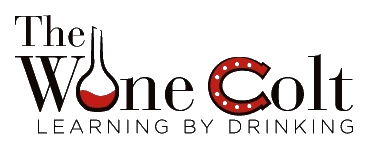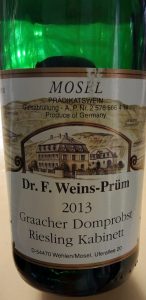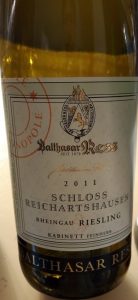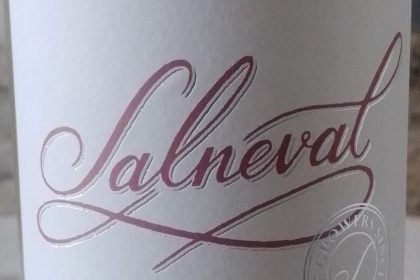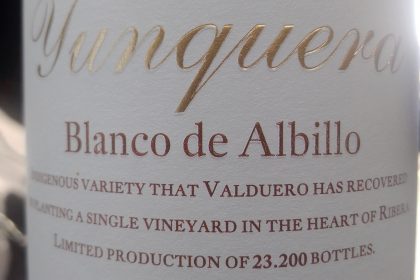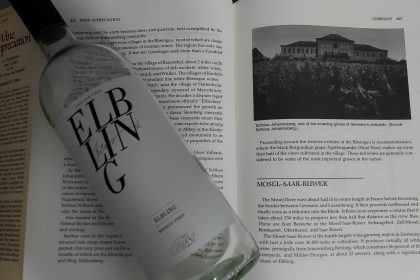I make no secrets that my favorite white grape is Riesling. Ever since my first conscious encounter with it almost 8 years ago I knew it to be love at first gulp. Since then I’ve continued to enjoy it but for the past few years I’ve been wanting to explore and compare how this noble grape equates with itself based on the place where it was grown. Kind of like the experiment I shared the other day with Chardonnay but on steroids. And so the old man and me got our riesling bottles together and coordinated an event with a few friends to share on the experience.
Since this was a learning experiment I’m not only sharing tasting notes but the information I collected before selecting the wines for the event. Also, we did it blindly. Not because anybody would guess what we were drinking, but to avoid preconceptions about locations and just focus on the qualities of the wines. This was a Riesling event after all and we started that way.
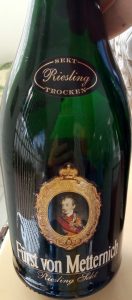 Fürst von Metternich Sekt Riesling Trocken NV. Yes, we started with a sparkling made out of Riesling. From Johannesburg in Germany. They use the charmat method for fermentation and are currently owned by Henkell & Co. Sektellerei. However the Metternich family has a long lineage since the 12 century working with wines in Johannesburg and were it is credited to have the oldest vineyards of Riesling in the world.
Fürst von Metternich Sekt Riesling Trocken NV. Yes, we started with a sparkling made out of Riesling. From Johannesburg in Germany. They use the charmat method for fermentation and are currently owned by Henkell & Co. Sektellerei. However the Metternich family has a long lineage since the 12 century working with wines in Johannesburg and were it is credited to have the oldest vineyards of Riesling in the world.
This wine has 12.5% alcohol and is light bodied and not as dry as one expect given the trocken designation. Lots of fruit and hints of Gala apples and ripe pears gravitating within the aroma and taste. At one point WE gave the wine 85 points and it’s distributed in Puerto Rico by B. Fernández at El Almacen del Vino.
I didn’t even know this wine was available here but while we were making the list for the tasting we started wondering what we would start the event with and came across the wine online. Didn’t know what to expect of it. It got mixed reviews from very likable to likable. No one disliked it to my understanding.
Once we got ready to start the tasting, we separated wines in flights of three and I tried to keep a theme within the flights. Be that geographical, producer, etc. The first flight was United States which represented 3 of the 12 wines we tasted.
[divide color=”#000000″]
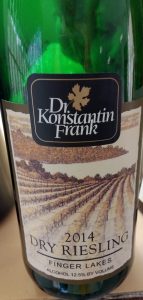
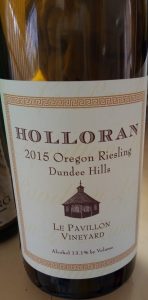
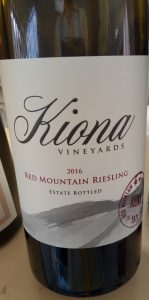
[divide color=”#000000″]
The first wine of the first flight was a Dr. Konstantin Frank Dry Riesling 2014 from Finger Lakes, New York. A winery founded by an Ukranian immigrant who in 1951 arrived in America to start a new life. He brought with him his family and his PhD on Viticulture and his experience as a Plants Science professor. After some time studying the subject, he believed that lack of proper rootstock, not the cold climate, was the reason for the failure of the Vitis Vinifera vines in the Finger Lakes. In 1962 he founded Vinifera Wine Cellars. From there his son took over in the 80’s creating the first sparkling using the traditional method with the 3 main grapes in the region. Currently his grandson runs the business.
This particular wine received 91 points from WE and it was #31 on their Top 100 Best Buys of 2016. The wine was, in this flight, the most similar to my expectations of a dry riesling. It was light in color and the nose evolved over the 20 minutes I had it in my glass. A 12.5% of alcohol which I found on target while green apples, the bitter ones, hit me on nose and lots of acidity with a goldilocks finish. This one I bought on a trip because here in Puerto Rico I haven’t seen anybody selling Finger Lakes wines, which is a shame.
The second wine was a Holloran 2015 Oregon Riesling Dundee Hills from the Le Pavillon Vineyard. I”ll be honest, I had never heard of this wine until a week before the event. I went to The House in Condado, talked with Javier the store manager and told him I was looking for something Riesling other than Washington and New York. I was more focused on finding something from California but then he showed me this wine. He mentioned that the people from Bespoke Selections (also known as Hungaricum) import it and they have good credibility with me regarding their wine choices and the quality so I decided to give it a chance and boy was I happy I did.
The winery was founded in 1999 by Eve and Bill Holloran when they bought a vineyard in Eola-Amity Hills AVA. Bill gets the credit for launching something called the ‘garagiste‘ movement in Oregon that same year however it wasn’t until this year that I learned that it means ‘a passionate winemaker who creates fine limited production wines (occasionally in his or her garage)’. He came from the technology sector (that probably explains the love affair with garages). They produce the 3rd highest priced Riesling wine in Dundee Hills and very few stores carry the wine. So I’m guessing quantities available in the island are limited.
This wine was something else. I probably should have mentioned this earlier but with the exception of the sparkling and the last wine, this was meant to be a dry Riesling event. I knew what to expect on German wines but the rest was a bit unpredictable. That’s not to say I don’t enjoy sweeter Rieslings because I do. A lot. And this particular wine felt like an amazing american Spätlese to me. It had a lovely golden hue color, definitely medium dry with a tropical fruits like cantaloupe, pineapple and mango and quite a long finish. This was however one of the wines with the highest alcohol level with 13.1%. It’s been almost a week and I’m still thinking about this wine.
The third wine of the flight was the Kiona Vineyards Red Mountain Riesling 2016. I recently had this wine at a tasting of wines from Washington in which we had just two white grape wines and it was extraordinary. Kiona makes two Rieslings but I chose Red Mountain because of its rich wine history and quality levels. Kiona was founded by John Williams and Jim Holmes, two G.E. engineers that in 1975 decided that they wanted to go into the wine business. There is a great story about how they found water there worth your read on their website. In 1980 the first vintage under the Kiona name was released. Regarding Red Mountain you could see it as the Red Pill from the Matrix of wine sites in Washington or even more like a wine Inception since it’s an AVA, within an AVA, within an AVA (Red Mountain < Yakima Valley < Columbia Valley). The name red comes from drooping brome cheatgrass that covers the area. The terroir is unusual, very gravelly, high alkalinity and calcium carbonate content. The slopes are southwest facing documenting warmer temperatures and more sunlight hours than any other part of the Columbia Valley AVA and at nighttime the temperatures drop significantly to help maintain the acidity levels of the grapes.
The wine is solid with its fruit forward approach but not overbearing and with minerality present in it. It was crisp, balanced and all around a fantastic wine. The first time I tried the wine I even got hints of Guava (and was not the only one I might add). I don’t know what it means that I didn’t this time but I did get apples and pears. From the notes I read 2016’s vintage started early with temperatures in the triple digits, lots of ripening and absent of precipitation. then the summer cooled down and extended the harvest. They only make 392 cases of this wine which carries a 12.5% alcohol. The wine is distributed by Fine Wine Imports in Puerto Rico.
These three wines had some similarities, but highly identified differences even within the one from Oregon and Washington that are so close by. Differences such as color, fruit forwardness vs acidity and even length of finish. Till this day I had not tasted a Riesling from anywhere other than Germany that was Spätlase-like. That’s not to say that they weren’t out there, but they aren’t the norm.
The second flight approached and this time the three wines were from three different countries. France, Italy and Australia.
[divide color=”#000000″]
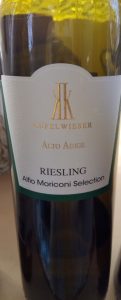
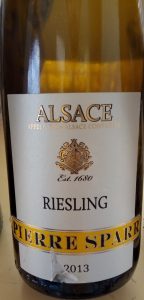
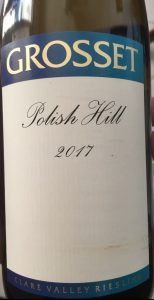
[divide color=”#000000″]
The fourth wine was the Kupelweiser Alto Adige Riesling 2016 from Italy. I bought this wine on my last trip to Florida out of curiosity because I had never had a Riesling from there. (I do that a lot. I’m an avid curious wine buyer.) I however knew nothing about it and the expectations were not high due to sheer ignorance. So for the tasting I started reading and my perspective changed quite a bit. For starters the wine resembles more a wine from Austria than from Italy. The reason is the location. It literally borders with Austria separated by the Alps. This area represents only 1% of the wines produced in Italy and 98% of them are D.O.C. (Denominazione di Origine Controllata). For the longest time this was the main area of communication between Italy and the rest of Europe and was part of the Austro-Hungarian Empire until the end of the First World War when it then joined Italy. There are over 13,300 acres of vineyards in the area and they are considered one of the best areas for high quality white wines in Italy. Also labels have names in both Italian and German. The high altitude is reserved for white wines and red in the valley which about 70% of them are run by coops.
The wine was given 87 points in WE and it has 13% alcohol. When I opened the wine and poured it in the decanter I saw a lot of bubbles at the top making me question what I had bought. It had a yellow-green-ish color that looked more like a limoncello. First of all, let me just say this wine was spectacular. The nose, on palate, the floral notes and the citric flavors. I was taken aback. Maybe because expectations were not high, or maybe because it was just that good. It’s funny, before this, I had never heard of Alto Adige, now I keep encountering information about it and how it is a place of high quality. So I guess it was a good decision to buy. The finish of the wine was long and it was more medium-dry than dry in my opinion.
The fifth wine was the Pierre Sparr Riesling 2013 from Alsace. A wine from a winery founded by Jean Sparr in 1680 ran by the Sparr family for 300 years. Pierre took over in 1900 and saw the village destroyed by World War Two and later rebuilt it from the bottom up with his sons. They have 37 acres but source from other growers as well for their wines.
There is something in common between this wine and the Italian wine. Alsace, for a long time, was part of Germany as well and these wines are evidence of that time. The structure, the balance and the tradition which is something we always encounter with Deutschland wines. The wine has 12% alcohol and it is as dry as the come. Lemon and bitter tropical fruits on nose (I’d even venture to say I get some grosella). Acidity was there but not the highest of the tasting and the finish was goldilocks style. This wine in particular I haven’t seen in the island but another version is available in The House.
The sixth and final wine of this round is the Grosset Polish Hill 2017 from Australia. Grosset is a relatively young winery, established in 1981 and located in the historic town of Auburn in South Australia’s Clare Valley. They are all organic from the vineyards to the actual winery. Only 25% of wines gets exported. Founded by Jeffrey Grosset who has received multiple awards over the years and so has his winery who in 2017 was named within the Top 100 Wineries of the world by Wine & Spirits. Polish Hill is a vineyard located in an area of silt and shallow shales over thin crusts of clay and gravel.
As per the wine itself just like they describe it’s very floral and mineral with structure and as dry as a recently purchased towel. 12.7% alcohol which gives it more of a medium body and hints of lemon peel. Goldilocks finish. On their website notes they write that the wine has up to 20 years of ageing potential. That’s an interesting statement for a screw-cap wine. It would be interesting to try an older Grosset to compare it’s lifespan. In Puerto Rico they are distributed by Spirits & Co.
At this point of the tasting we had completed the the first part of international Rieslings and it was time to go dive into the grape’s source. Germany.
[divide color=”#000000″]
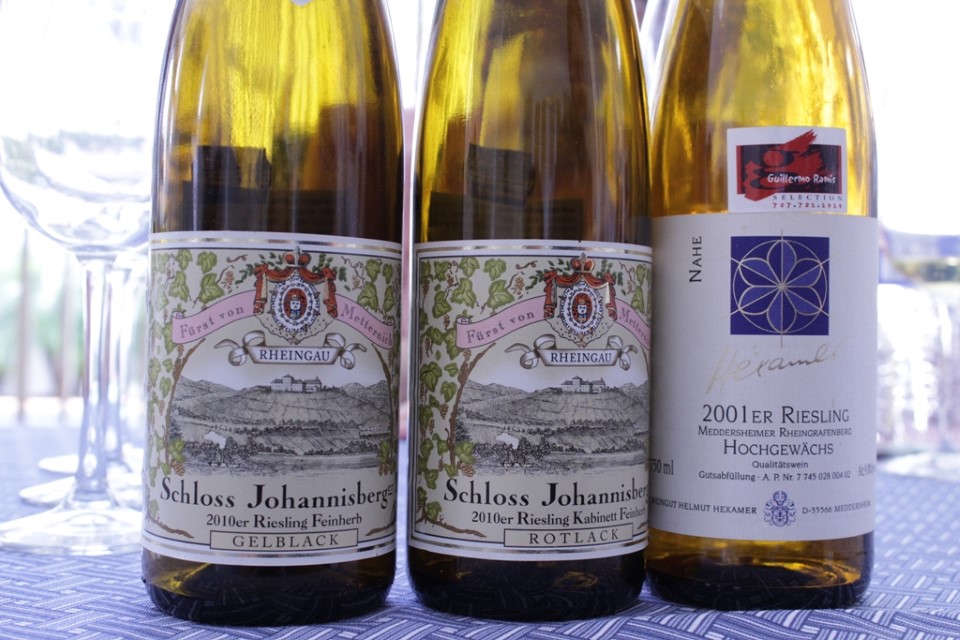
[divide color=”#000000″]
I didn’t hold back and went full on with amazing established wines and jaws dropped a bit upon this flight. Without a shadow of a doubt, the best flight of the day. The seventh and eighth wines are Schloss Johannisberg Rieslings. I’m breaking the standard of description because it’s the same winery which was established in 1720 and located in Rheingau (one of the thirteen wine regions of Germany and probably one of the best known along with Mosel). They have 35 hectares within a single location. The Johannisberg Castle has what they call a “bibliotheca subterranea” which keeps around 12,000 bottles from all major vintages since 1748. One thing I learn from Schloss is what Germans call the Golden October which is a phrase used to define a period of good weather around the 10th to 20th of October and it gets the name from autumnal colors. In 1971 after the new German wine classification S.J. created names tied to colors to define grape ripeness. This is important because we have two of those in this tasting. The definitions are:
- Gelblack – Yellow – Qualitätswein
- Rotlack – Red – Kabinett
- Grünlack – Green – Spätlese
- Silberlack – Silver – Erstes Gewächs
- Rosalack – Pink – Auslese
- Rosa-Goldlack – Pink/Gold – Beerenauslese
- Goldlack – Gold – Trockenbeerenauslese
- Blaulack – Blue – Eiswein
Both wines are from 2010 which started with a long cold winter and unusually many days of snow. Afterwards, that spring brought abundant rainfall and summer was hot but short. Months of maturity (august-september) remained cold and humid. But they did catch a break and received the magic Golden October. This allowed to salvage what’s considered the smallest volume since 1945 with a 60% less than average yield.
As per the wines themselves the Gelblack 2010 had great citrus, pears, and floral notes but in what can only be described as precise quantities. This wine is the definition of balance. Great acidity and only 11.5% alcohol.
The Rotlack 2010 on the other hand had only 11.0% of alcohol and was more fruit accessible with the same citrus and pears but more yellow tropical fruits and a longer finish. The structure of this wine is paramount and the acidity quite palpable.
Both wines are available in Puerto Rico and distributed by B. Fernández at El Almacen del Vino although not necessarily this vintage.
Then came the WOTD (Wine Of The Day) for me. The ninth wine was a 2001 Hexamer Hochgewachs Riesling. A 17 year old Qualitätswein from the producer Weingut Hexamer. The wine is from the region Nahe and this is the first time I try wines from there (Usually is either Mosel or Rheingau which again, are the most easily available wines in our market). Nahe is recognized as making wines since roman times in 778 but it wasn’t until 1971 that it is established as a wine region. The way they work is they have 7 grosslagen (collective sites) within 328 vineyards. Hexamer holds 7.5 hectares in Meddersheimer Rheingrafenberg steep south east facing slope of red sandstone with deposits of quartzite known for producing small berries. Their annual production is of 10,800 cases.
Let me just say that the color of this wine was outstanding. An amber-brown-ish similar to a Japanese maple leaf in autumn. Notes of lychee, citrus on nose and a sweetness on palate that only it’s age could provide because this isn’t an intended sweet wine. Long finish and only 9% of alcohol and 8.2g of residual sugar that still qualifies it as a dry wine but close to the edge. One of the few wines I didn’t saw people throwing in the bucket between flights. Simply an extraordinaire example of what the Nahe region can offer. The wine is distributed by Ambrosia Fines Wines in Puerto Rico.
The final flight was upon us. The last three wines. Two Kabinetts and one Eiswein
.
[divide color=”#000000″]
[divide color=”#000000″]
The tenth wine was a Dr. F. Weins-Prüm 2013 Graacher Domprobst Riesling Kabinett from Mosel. Before the tasting I would found these names completely interchangeable because first of all I don’t speak German and second of all…no actually it was just that one thing. Amazing what reading does (Cue the 1990’s NBC Commercial The More You Know).
This wine like I mentioned is from Mosel. The first thing I cared to know about was deciphering the name so I went after the Graacher Domprobst part first. Man was that a rabbit hole comparable to the one in Alice in Wonderland. For starters that is the name of the vineyard, which is named after the dean of the Trier cathedral who at one time received one-third of the total taxes raised in Graach, which is a village in Bereich Bernkastel in Mosel. Vines there are 30 years old and 135 hectares of vineyards of mostly riesling. What made this vineyard special was that Dromprobst was one of the 3 sites that have been classified by the VDP (Verband Deutscher Pradikats, an association of german pradikat wine estates where membership is voluntary but strict and considered unofficial yet they have 3 classifications comparable to France’s Grand Cru and Premier Cru and Cru) as Grosse Lage which is used only for Germany’s very best vineyard sites.
The wine itself has a aromas of apple and a palpable minerality. On the palate it had some honey flavors, ripen pears, and an elegant balance. This is the definition of an old style Kabinett. The wine has 7.5% alcohol which is considerably low. The length of the finish was a bit short for my taste. It was given 92 points by WS. In Puerto Rico it is distributed by Plaza Cellars.
The eleventh wine was a 2011 Balthasar Ress Schloss Reichartshausen Riesling Kabinett from Rheingau. The story of Balthasar starts with him as a butcher in Hattenheim. He buys a hotel in 1890’s while at the same time the family produced its own wine under the name Von Unserm (meaning our own). In the 1920’s his son Carl purchased an estate during the thriving wine business era. Then succession went to his nephews from Paul in the 40’s, to Stefan in the 60’s and to Christian Ress in the late 90’s. The appellation of origin Schloss Reichartshausen is solely owned by Balthasar Ress. Originally belonging to the Cistercian monastery Kloster Eberbach from the early 12th century to the early 19th century. Only Riesling gets cultivated here where the soil is chalky, deep loess, partially interspersed with gravelly sections.
The wine itself had a beautiful yellow hue on glass while on the nose aromas of lime and petrol where predominant. It had great acidity and only 9.0% alcohol yet with 24g of residual sugar this was more medium dry with a longer finish. The wine is distributed by Mendez & Co. in Puerto Rico.
Finally the last wine of the tasting. a 1985er Niederhauler Hermannsberg Riesling Eiswein 1985. I don’t know where the old man got a hold of this wine but as he told me, he has been keeping this in his cellars for at least 20 years. The wine is from Nahe and particularly from the village of Niederhausen and Hermannsberg is considered to be a Grosse Lage site and located on a south-west facing slope. This makes it a protected location ideal for making eiswein.
To say this wine was sweet is an understatement. With 8.5% alcohol it was a sublime ending to the event. The general opinion was that it was a bit oxidized on nose but not on palate. It was lush and balanced with hazelnut and molasses flavors. Maybe even hints of maple. This was a 33 year old wine properly stored and it showed. Such a lengthy finish and that color was just mesmerizing (see below). It was the perfect ending to a Riesling event.
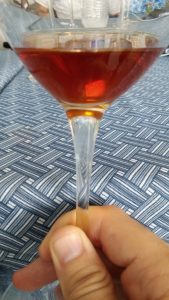
After we completed the tasting, we did open a couple of red wines, which where amazing but I won’t go into detail in this entry. I wouldn’t want to steal the thunder of any of these wines which were the intended target. I can’t stress enough how much I learned both by reading and taking notes and by actually drinking them. I called myself a fan of the Riesling grape before this tasting. Today, I’d like to think we have gone past that initial meet-cute stage and are on friendlier terms. When you get to know a wine better, the mysticism disappears and what’s left is just genuine appreciation for what it can give you back.
This won’t be the last time I do a Riesling exercise. There are plenty of more countries that grow the grape and we have plenty of more wines from Germany waiting for the opportunity to join in and express their purpose. Until then.
Cheers!
